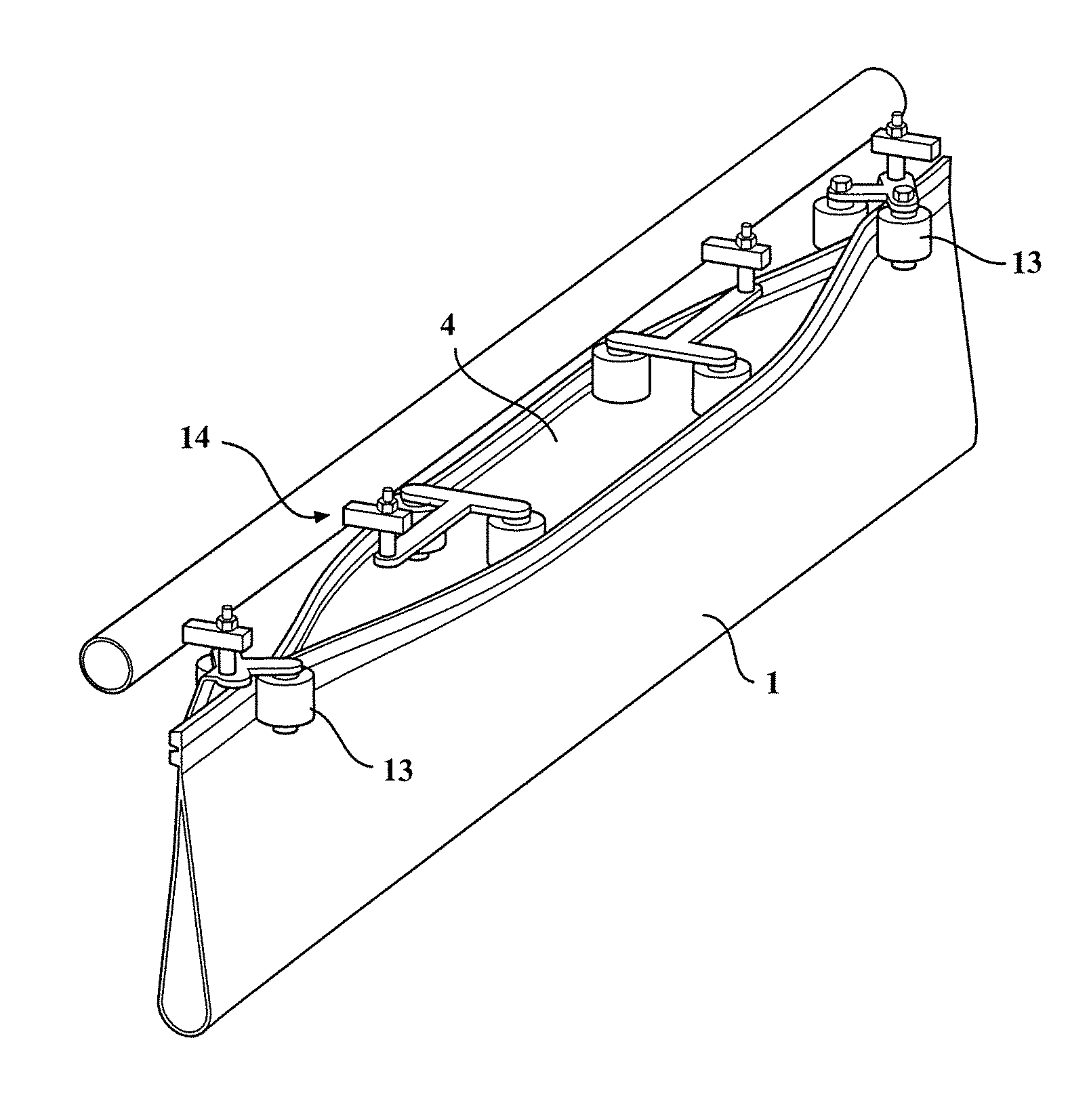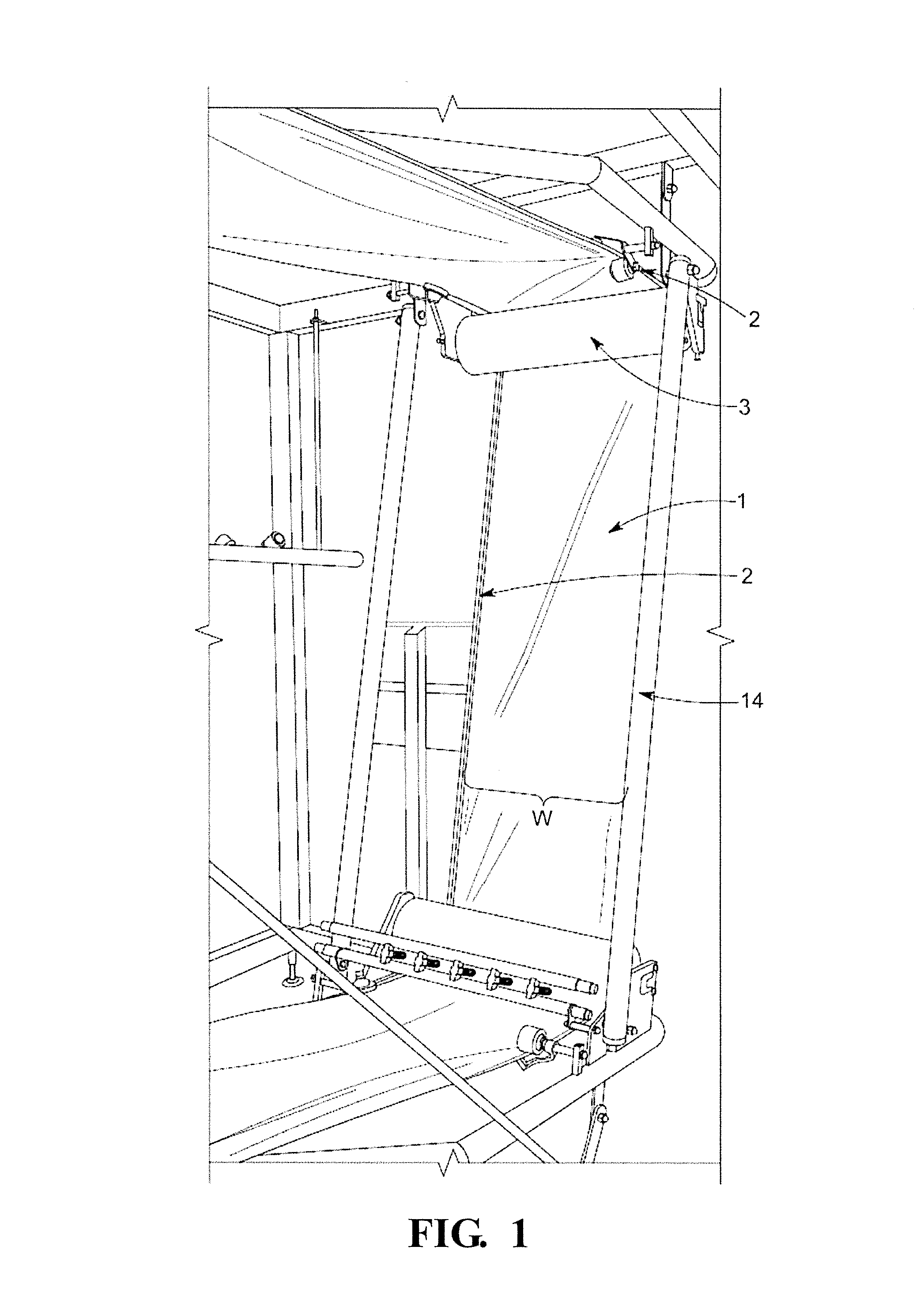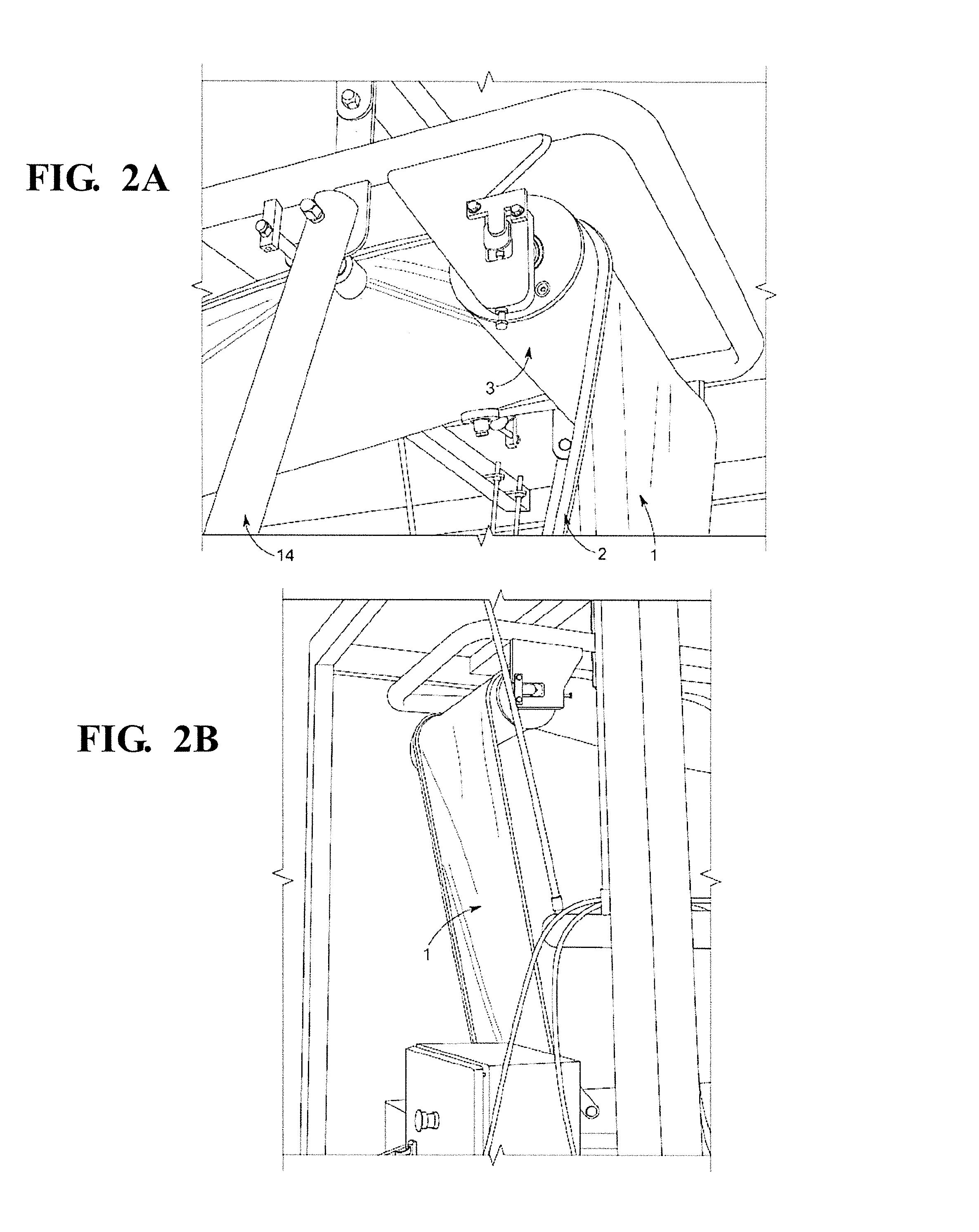Flexible closed belt conveyor
a belt conveyor, flexible technology, applied in the direction of conveyors, transportation and packaging, etc., to achieve the effect of inducing local tension
- Summary
- Abstract
- Description
- Claims
- Application Information
AI Technical Summary
Benefits of technology
Problems solved by technology
Method used
Image
Examples
Embodiment Construction
[0034]In the preferred embodiment of the invention the endless element is adapted to be transverse deformable into a closed pouch. The pouch is preferably extending between the edge bands. Thus, when the belt forms a pouch the endless element is suspended between the edge bands. The two edge bands 2 may be seen as two tensile force (longitudinal)-absorbing members that extends throughout the entire length of the endless element 1. The edge bands 2 are each connected by welding or gluing to a respective longitudinal edge portion of the endless element 1. The edge bands 2 are projecting from the plane of said edge portion for cooperation with guide rollers / belt drives 5 / pulleys.
[0035]The plastic sheet may be very thin and still provide adequate carrying capacity for use e.g. in the food industry. The thickness of the plastic sheet is a balancing between sufficient carrying capacity (greater thickness=greater carrying capacity), the ability to withstand kinking (smaller thickness=bette...
PUM
 Login to View More
Login to View More Abstract
Description
Claims
Application Information
 Login to View More
Login to View More - R&D
- Intellectual Property
- Life Sciences
- Materials
- Tech Scout
- Unparalleled Data Quality
- Higher Quality Content
- 60% Fewer Hallucinations
Browse by: Latest US Patents, China's latest patents, Technical Efficacy Thesaurus, Application Domain, Technology Topic, Popular Technical Reports.
© 2025 PatSnap. All rights reserved.Legal|Privacy policy|Modern Slavery Act Transparency Statement|Sitemap|About US| Contact US: help@patsnap.com



